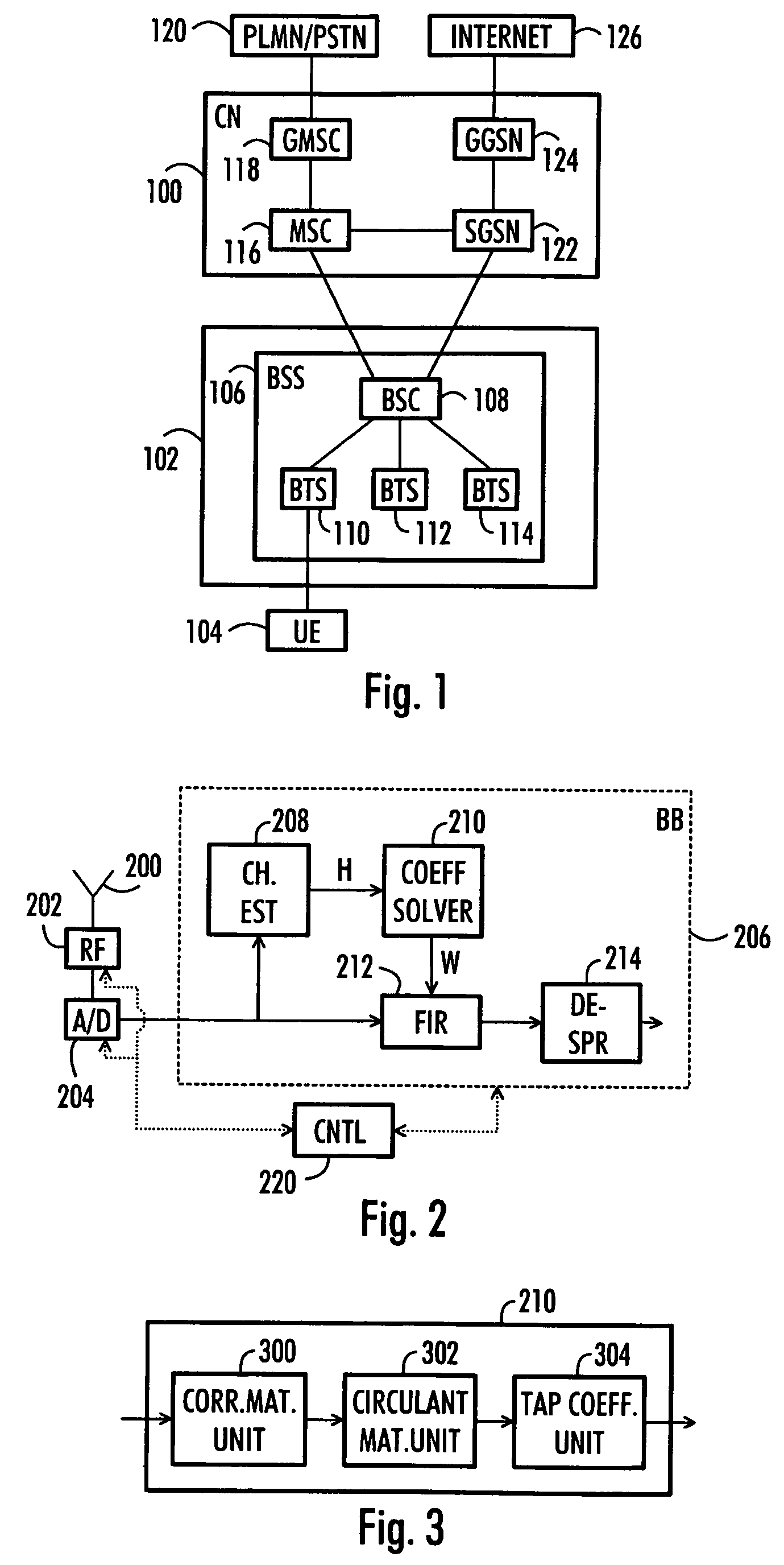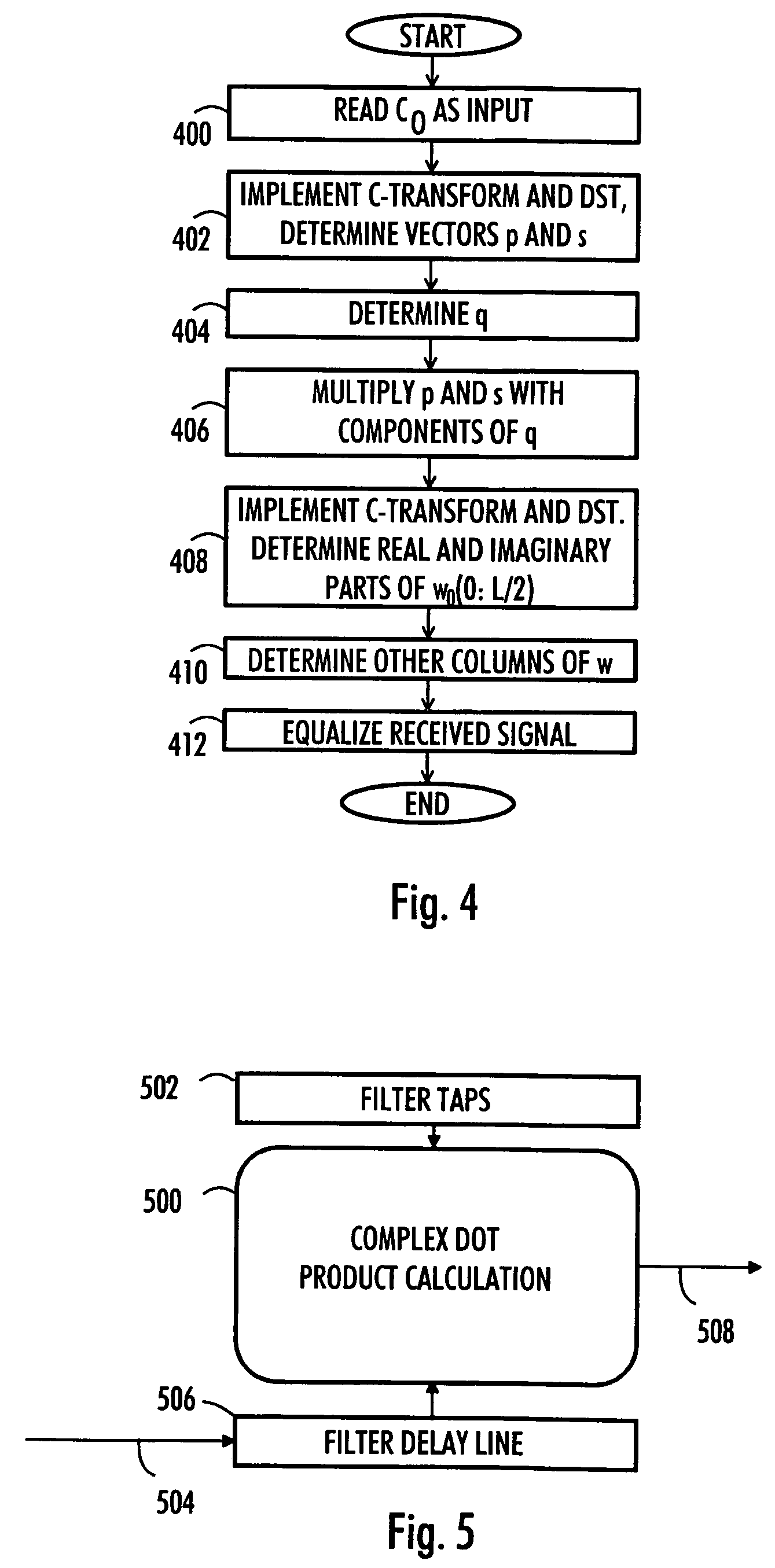Signal processing method, receiver and equalizing method in receiver
a signal processing and receiver technology, applied in pulse manipulation, pulse technique, instruments, etc., can solve the problems of large amount of processing, large complex inversion of a large matrix in particular, etc., to achieve the reduction of the number of operations required for determining the inverse of the matrix, the effect of reducing the implementation time and reducing the amount of memory required for calculations and data movements
- Summary
- Abstract
- Description
- Claims
- Application Information
AI Technical Summary
Benefits of technology
Problems solved by technology
Method used
Image
Examples
Embodiment Construction
[0023]The present invention is applicable to various telecommunication systems. A typical non-limiting example of a system to which the invention can be applied is UMTS (Universal Mobile Telecommunication System) and the evolutions of UMTS.
[0024]Let us take a closer look at FIG. 1, which illustrates an example of a structure of a cellular telecommunication system. FIG. 1 is a simplified block diagram describing the most important cellular telecommunication system parts at network element level and interfaces between them. The structure and operation of the network elements are not described in detail, since they are commonly known.
[0025]The cellular telecommunication system may be divided into a core network (CN) 100, a radio access network (RAN) 102, and a mobile station (MS) 104.
[0026]The RAN 102 includes a base station system (BSS) 106, which includes a base station controller (BSC) 108 and base stations (BTS) 110, 112 and 114. A base station system, a base station controller and...
PUM
 Login to View More
Login to View More Abstract
Description
Claims
Application Information
 Login to View More
Login to View More - R&D
- Intellectual Property
- Life Sciences
- Materials
- Tech Scout
- Unparalleled Data Quality
- Higher Quality Content
- 60% Fewer Hallucinations
Browse by: Latest US Patents, China's latest patents, Technical Efficacy Thesaurus, Application Domain, Technology Topic, Popular Technical Reports.
© 2025 PatSnap. All rights reserved.Legal|Privacy policy|Modern Slavery Act Transparency Statement|Sitemap|About US| Contact US: help@patsnap.com



